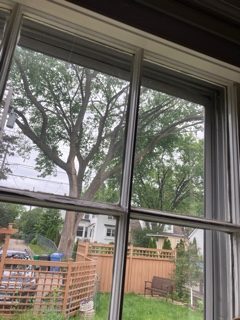The writer’s life is anything but glamorous—mostly staring out the window, then crossing out what I’ve just written. Nonetheless, readings and author interviews are inevitably peppered with process questions: Do you write by hand or on the computer? How much do you write every day? How long did this book take you? The nitty-gritty aspects of writing never fail to intrigue us. I suspect we’re looking for the magic: When and how does it strike? So when a colleague suggested I write a “behind the scenes” blog post, I thought I’d give it a go. Here are a few peeks:

A writing morning starts with a visit to my journal. What’s stirring today? What were my dreams and what do I make of them? What in my reading or family or work is rumbling in me? I need that daily, audience-less check-in to remember (re-member) my interior world. Even though I almost never revisit old journals, they are the wellspring for everything in my exterior creative life. Journaling keeps me sane, and I love the way ink flows from this fancy fountain pen gift from my parents.
For decades I composed exclusively on the computer. After two years of pandemic zooming, however, the screen makes me want to run for the woods, so for my latest project I’m using college-ruled notebooks and cheap fountain pen. I write characters sketches, plot out narrative chronology, draft scenes, and do my window-gazing from the sofa. Yes, writing by hand is slow, but slowness has its gifts—the primary one being pleasure.


After I accumulate enough handwritten fragments, I move into Scrivener, a word processing program that’s especially agile for book-length projects. While typing up early drafts I make major changes, mostly additions—my first revision, I suppose, although it still feels like a mess of prewriting. In any given morning, I move back and forth between the notebook and computer, tapping both the joy and freedom of the physical page and the organizational capacity of Scrivener.
Because I write on the computer, my biggest distraction is email. Occasionally I remind myself that, prior to the internet, I was just as distracted by clipping my toenails and brewing another pot of tea. Writing has always been and likely always be accompanied by the desire to flee. These days I use the top of the hour as my excuse to check—but not answer–email.

Perhaps because half of my mornings include getting my daughter to school or perhaps because I spend so much time window-gazing, I’ve never been one of those writers motivated by word-count goals. What I get done in the time I have is enough. At noon, before I conclude my writing morning, I make sure I’m in the middle of something—a sentence, a paragraph, a scene. That way I have traction when I begin the next day.
When and how does the magic strike? Beats me. All I know is that I need to be working when it does, and that work includes those long, blank stares at my muse—the elm across the alley.
–Elizabeth Jarrett Andrew

Photos by Elizabeth Jarrett Andrew
